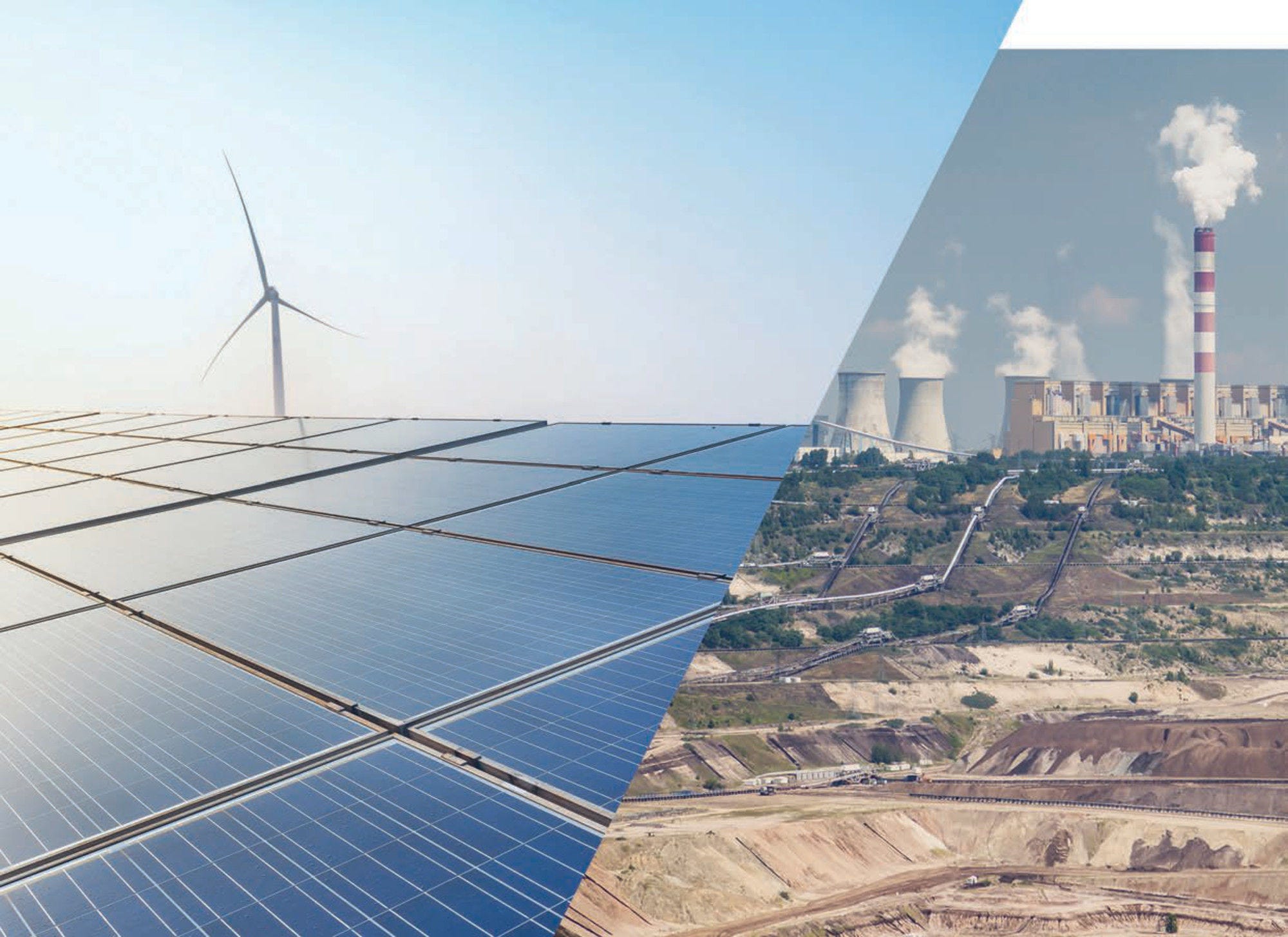Pricing Greenhouse Gas Emissions 2024: Gearing Up to Bring Emissions Down tracks how explicit carbon pricing instruments as well as specific taxes and subsidies on energy use have evolved between 2021 and 2023 across 79 countries, covering approximately 82% of global greenhouse gas (GHG) emissions. This report focuses on emissions trading systems, carbon taxes, fuel and electricity excise taxes, as well as subsidies that lower prices on emissions or energy products. The tax rates for this edition reflect rates applicable on 1 April 2023 while emissions trading schemes implemented throughout 2023 are also included.
Pricing Greenhouse Gas Emissions 2024

Abstract
Executive Summary
To progress the transition to net-zero emissions, countries must ramp up action to meet climate goals. Achieving the 2030 Nationally Determined Contributions (NDCs) targets, as well as peak fossil fuel use and GHG emissions, requires narrowing the implementation gap in current climate policies. In this context, although progress in carbon pricing and transforming energy taxation slowed down or even regressed amidst the global energy crisis, a number of jurisdictions are now preparing for progressing carbon pricing with a view to achieving their climate goals.
Pricing Greenhouse Gas Emissions 2024: Gearing Up to Bring Emissions Down tracks how explicit carbon pricing instruments as well as specific taxes and subsidies on energy use have evolved between 2021 and 2023 across 79 countries, covering approximately 82% of global greenhouse gas (GHG) emissions. This report focuses on emissions trading systems (ETSs), carbon taxes, fuel and electricity excise taxes, as well as subsidies that lower pre-tax prices on emissions or energy products. The tax rates for this edition reflect rates applicable on 1 April 2023 while emissions trading systems implemented throughout 2023 are also included. While these instruments represent an important subset of instruments with important implications for emissions outcomes, governments take diverse approaches to meet their climate targets.
At first glance, momentum in carbon pricing and energy taxation appears to have stalled since 2021. Although some countries have introduced new carbon pricing instruments, and some have been expanded, or tightened emissions caps, overall progress on expanding emission coverage has slowed. This is due to a large share of emissions already covered by major economies, as well as lasting effects from the response to the shock of the global energy crisis in 2022. The energy crisis caused countries to increase support measures, including through rate reductions or exemptions of energy taxes, subsidies and delaying or cancelling planned advancements in carbon and energy pricing. While these reductions in overall carbon rates dominate results, a closer look shows that these are concentrated in implicit carbon pricing such as fuel excise taxes, whereas explicit carbon pricing through ETSs and carbon taxes have made modest increases. Meanwhile, economies are introducing new, and expanding existing, carbon pricing instruments. Increasingly, they are paying attention to international effects of asymmetries across borders and are introducing or considering introducing instruments such as Border Carbon Adjustments and investment subsidies for low-emission technologies as part of plans to meet fast-approaching climate targets in 2030. Additionally, progress is being made through expansion to include additional industries in carbon pricing schemes. Finally, governments are considering the public acceptability of mitigation policies like carbon pricing, including through revenue use and tax base shifting strategies.
The report also finds that:
Overall, the share of emissions covered by an explicit carbon price and fuel excise taxes in 2023 has remained unchanged compared with the share of emissions covered in 2021. Approximately 42% of GHG emissions across the 79 countries covered in this report are subject to a positive Net Effective Carbon Rate (Net ECR), accounting for carbon taxes, emissions trading systems, fuel excise taxes and fossil fuel subsidies. About 27% of GHG emissions in 2023 are covered by explicit carbon prices – an ETS, a carbon tax, or both - while the share covered by fuel excise taxes, an implicit form of carbon pricing, is lower at 23%.
The change in rates has been mixed. Overall, the average Net ECR declined to EUR 14.0/tCO2e in 2023 from EUR 17.9/tCO2e in 2021. Explicit carbon prices increased, primarily reflecting the increase in average ETS permit price and modest carbon tax increases. Implicit carbon prices in the form of fuel excise taxes remain the strongest price signal, despite decreasing relative to 2021 levels. This was accompanied by an increase in fossil fuel subsidies.
To a large extent, the downward shift in Net ECRs reflect countries’ responses to the shock of the energy crisis of 2022. In an effort to address concerns over energy affordability and security, governments ramped up fossil fuel subsidies and introduced rate reductions and exemptions to fuel excise taxes. As a result, the Net ECR of road transport, buildings and agriculture strongly declined between 2021 and 2023. Road transport remains priced at the highest average Net ECR across sectors, despite a substantial decrease of 24%.
Currently, an increase in the introduction of new carbon pricing instruments is expected over the next five years. In particular, ETSs are likely to become more widely used and diverse, with new systems under development that could lead to an increase in coverage of global emissions of 7 percentage points, i.e. an increase by about one quarter. Expansions of existing carbon pricing instruments to more complex sectors such as waste incineration have also moved into focus.
Assessing the taxation of fuel and electricity use through the Effective Energy Rate (EER) shows that more than half of energy use remains untaxed in 2023. Measured in EUR/GJ, the EER applies to energy use as a base, accounting for fuel and electricity excise taxes and explicit carbon pricing instruments. On average, high-income countries taxed energy use at EUR 4.96/GJ in 2023, while low-upper and middle-income economies levied on average EUR 0.54/GJ. In both groups, the EER’s distribution remains heavily skewed due to differentiated rates across sectors, fuels and consumer groups within a country and differences of tax levels between countries.
Fuel excise taxes continue to dominate EER in 2023, contributing on average 74% to a country’s EER. However, for the first time, four countries increased their level of explicit carbon pricing to the extent that they levy a higher explicit carbon price than fuel excise taxes per GJ.
Fossil fuel use is subject to a higher Net EER than low-carbon electricity sources. The road transport fuels, gasoline and diesel, continue to face the highest rate. A notable change since 2021 was the Net EER of coal becoming higher than natural gas in 2023 due to higher subsidies for the latter. All low-carbon electricity sources are subject to the lowest Net EERs, with solar, wind and nuclear power effectively being subsidised.
Hikes in fuel and electricity prices during the energy crisis in 2022 triggered many governments to adopt large fiscal support packages, including both significant cuts to fuel excise taxes and increases in subsidies for fossil fuels and electricity. Similar to the Net ECR, this has driven the Net EER downwards since 2021 in many countries. While many countries have phased out temporary measures, some have chosen to maintain support.
Untargeted price-suppressing policies such as cuts to fuel excise tax or VAT rates and caps on energy retail prices dominated government responses to the energy crisis. Broad-based measures effectively subsidised the energy consumption of all households, not providing important incentives to reduce energy demand.
Global revenue losses from displaced oil consumption due to rapidly electrifying road transport sector stood at EUR 13.2 billion in 2023 and could in increase to more than EUR 155 billion in 2035. Governments started adjusting policy frameworks, with recent examples resulting in a shift away from energy taxes towards other pricing mechanisms such as distance-based road user charges.
At the time of writing this report, 42% of emissions are covered by a positive Net ECR and 27% by an explicit carbon price, though the pricing level remains at a Net ECR of EUR 14.0/tCO2e. This will require an increase from between EUR 60/tCO2e and EUR 120/tCO2e by 2030 to meet climate goals, or the use of other policies that may induce similar emission reductions as these carbon price levels.
While the overall emissions coverage has changed little, underlying changes such as the introduction of new ETSs in middle-income countries, the expansion of existing instruments to cover new sectors such as waste incineration, the introduction of instruments to cover carbon content in imports and supporting policies for investment in low-emission assets are resulting in a web of complementary policies to achieve countries’ political, economic, social and environmental goals.
In addition, the effects of the energy crisis have negatively impacted the Net ECR via reductions in fuel excise tax rates and increases in fossil fuel subsidies. While these changes were not the direct result of a change in carbon pricing policy – explicit carbon rates through carbon taxes and ETSs have seen moderate increases in rates since the last edition – they weaken incentives to reduce emissions.
It has become clear in recent years that there is no silver bullet for carbon pricing and energy policy as countries have opted for a complex array of policy instruments to mitigate climate change that suit their economic, political and social circumstances. As policy action ramps up, the challenge increasingly is to understand policy interactions internationally. In relation to climate policy effectiveness, governments are exploring options to reduce carbon leakage concerns e.g. in the form of free allocation of emission permits and Border Carbon Adjustments.
In the same series
Related publications
-
 25 July 2024
25 July 2024










